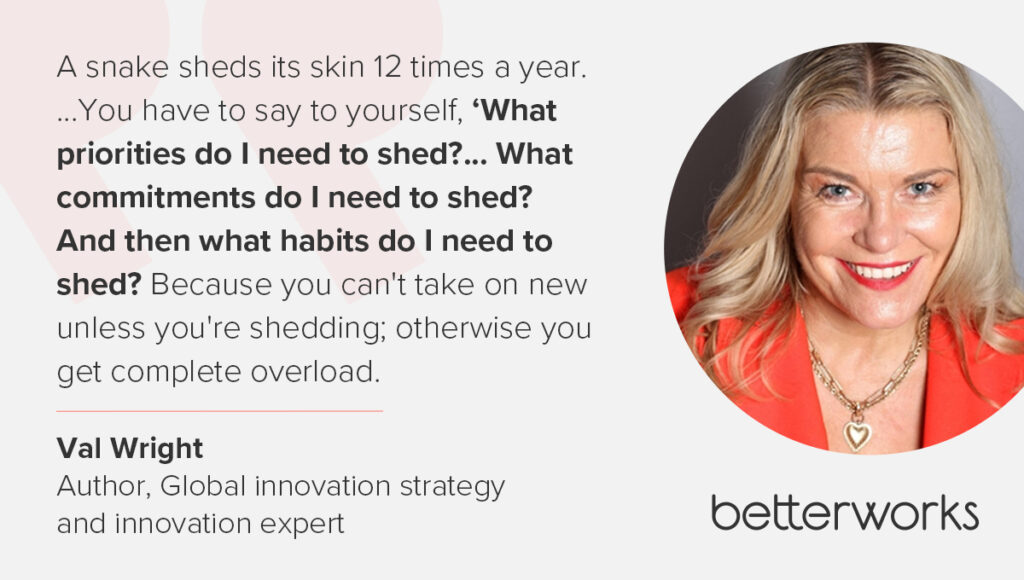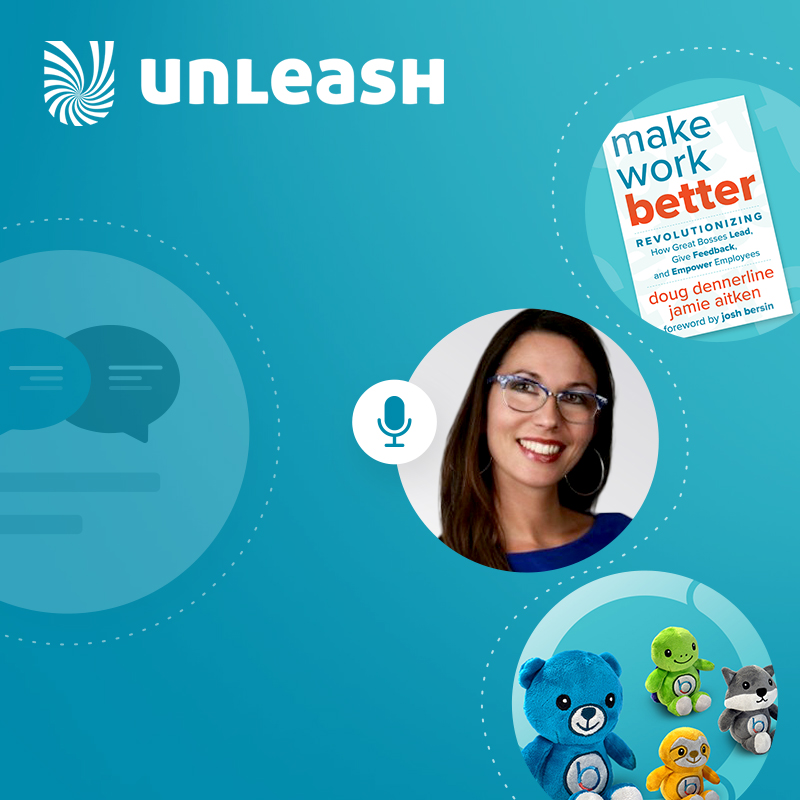Some companies wait for disruption. Others create it. The business landscape is shifting faster than ever, leaving many business leaders struggling to keep pace. But the companies that thrive aren’t the ones that react—they’re the ones that reinvent. And HR? You’re at the center of it all.
“The common thread for companies that can reinvent themselves is their ability to turn inward and really focus on what can be controlled within the company,” says Val Wright, global strategy and innovation expert, author, and keynote speaker at EmpowerHR.
HR is at the heart of business transformation, helping companies navigate change and unlock new opportunities for growth. But how do you make reinvention a core part of your company’s DNA? HR can take the lead in three key areas.
Bring the vision into focus across the organization
As an HR leader, your impact is greatest when you’re closely connected to your CEO, board, and executive team. Reinvention starts with understanding the company’s strategic goals, growth plans, and evolving priorities, and then designing HR initiatives to drive them forward.
“The ideal role is that the CEO treats those who run people, culture, talent, and human resources as equal — if not more important — than all of their other functional leaders,” Val says, “so that there is the ability to translate what the business is trying to deliver into action, quickly and effectively.”
Val cites a disconnect—what she calls a “communication sieve”—between what leaders intend to communicate, and what actually comes through to employees. “You can really help unlock communication so everyone in your company understands and believes your strategy, what you’re trying to do,” she says, “and then coming up with inventive ways of how you can deliver all of your business results.”
One striking example comes from Val’s time working with Xbox. When the division faced billion-dollar losses due to hardware failures, Microsoft CEO Steve Ballmer questioned whether to shut it down entirely. In response, the leadership team recognized an urgent need for reinvention. Instead of retreating, they launched a three-day global ideation event where employees across functions pitched transformative ideas.
From this effort emerged the concept of a voice- and motion-controlled gaming experience, which ultimately became the Kinect camera—one of the fastest-selling consumer electronics of all time.

Facilitate innovation through intentional connection
Innovation in the workplace happens when people from different teams, backgrounds, and expertise levels come together to exchange ideas. But in a world where hybrid and remote work have become the norm, spontaneous idea-sharing has become more difficult.
“What’s been lost in the last few years is the ability to hold space for generating ideas—the ability to allow people across function, across city, across country, to connect and just ideate and explore and imagine the future possibilities,” Val says. That’s where you can step in.
She suggests creating “biscuits with the boss” moments—intentional yet organic opportunities for employees to engage with leadership. The show Ted Lasso can serve as inspiration. Just as Ted Lasso’s morning ritual involved bringing biscuits to his boss as an excuse to connect, you can orchestrate similar touchpoints, whether through casual virtual coffee chats, cross-functional lunch-and-learns, or structured ideation sessions. “It’s these spontaneous chit-chat moments where ideas come and you get to explore possibilities.”
Instead of trying to squeeze in separate brainstorming sessions, look at what’s already on the company calendar. Sales kickoffs, all-hands meetings, and industry conferences are all prime opportunities to spark great conversations and encourage employees to think beyond their daily responsibilities. “It doesn’t have to be a three day giant event,” Val says. “It can be something that you insert for 30 minutes in your regular team meetings.”
Shed what’s not working to make room for new ideas
Reinvention isn’t just about adding new initiatives—it’s also about shedding old ways of thinking. Val calls this process “ecdysis evolution” or “the art of shedding,” named after the way snakes shed their skin. You play a pivotal role in helping your business undergo this necessary transformation.
“A snake sheds its skin 12 times a year,” Val says, explaining that the process and frequency removes limitations and allows it to grow. “You have to say to yourself, ‘What priorities do I need to shed? What people in my life do I need to shed, both in my work life and in my home life? What commitments do I need to shed? And then what habits do I need to shed?” she says. “Because you can’t take on new unless you’re shedding; otherwise you get complete overload.”
Periodically evaluate what’s no longer serving the business. Are outdated processes slowing down productivity? Are certain legacy policies preventing agility? Lead the charge in questioning the status quo.
Resistance to change is natural, but you can help employees and leaders shift their mindset by framing change as a positive evolution rather than a disruptive force. This means communicating the “why” behind transformations and illustrating the benefits for both individuals and the company.
Be the one the CEO asks for business advice




